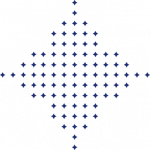How the heart works
The heart is a pump that consists of four chambers separated by a wall and four valves. The two top chambers are called atria. They act like reservoirs. They collect and hold the blood until it can be moved to the main pumping chambers, the ventricles.
The contraction of the atria and of the ventricles, in a coordinated sequence, make your heart pump blood to supply oxygen to your body.
Your heart is normally slightly larger than your clenched fist. Your heart is capable of beating over 100,000 times a day (at a rate of about 70 beats per minute).
In one day it pumps more than 1,760 gallons (7,000 liters) of blood through approximately 11,800 miles (19,000 km) of circulatory system. The right atrium collects 'used' blood from all over your body. The right ventricle pumps the used blood to both lungs. The left atrium collects the newly oxygenated blood from your lungs. The left ventricle pumps the oxygen-rich blood back to feed the heart muscle itself and to the rest of your body.

What is tachycardia?
If your heart rate is over 100 beats per minute this is called tachycardia. There are normal and abnormal fast heart rhythms. Exercise, mental or emotional stress, and some illnesses can cause your heart rate to rise normally, above 100 beats per minute.
When your heart rate is too fast, however, or occurs without cause, or is too fast and irregular, it is called a tachyarrhythmia.
The different types of tachyarrhythmia include Ventricular Tachycardia (VT) and Ventricular Fibrillation (VF), and are described below.

